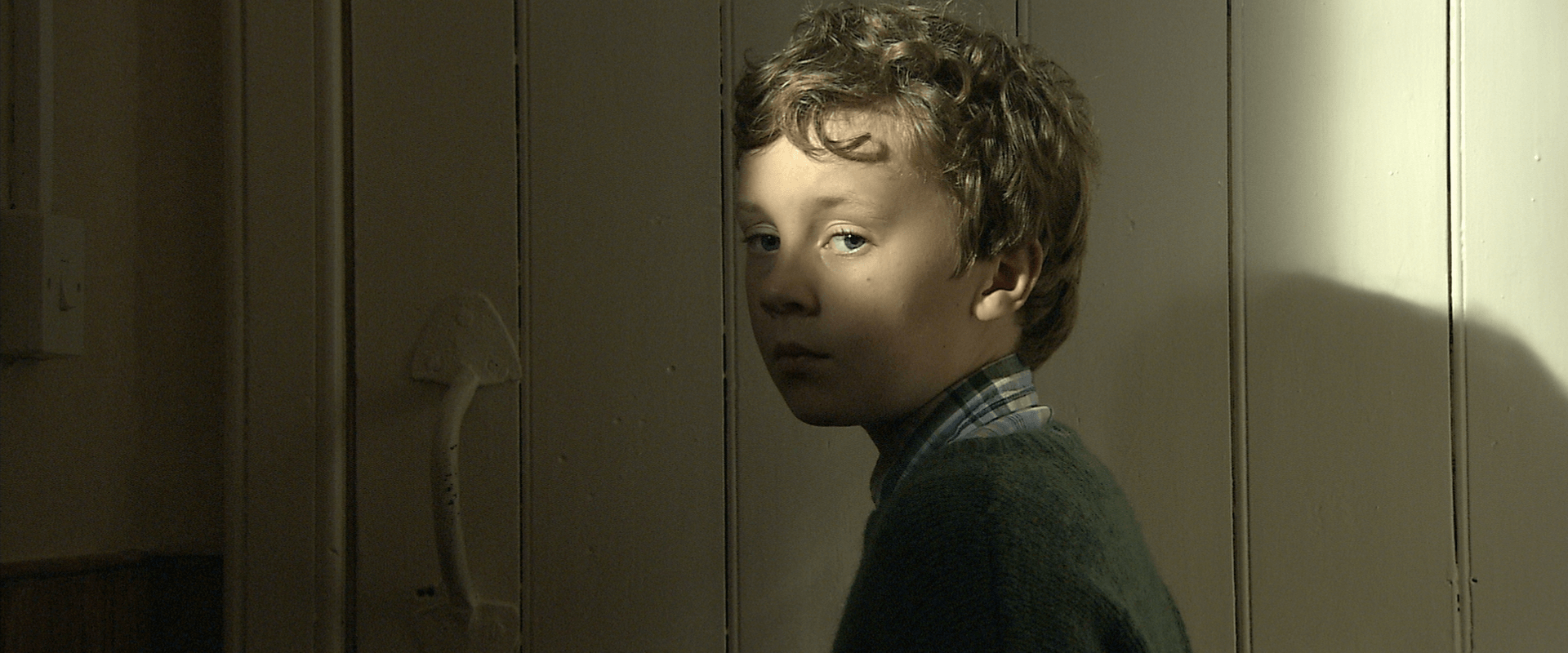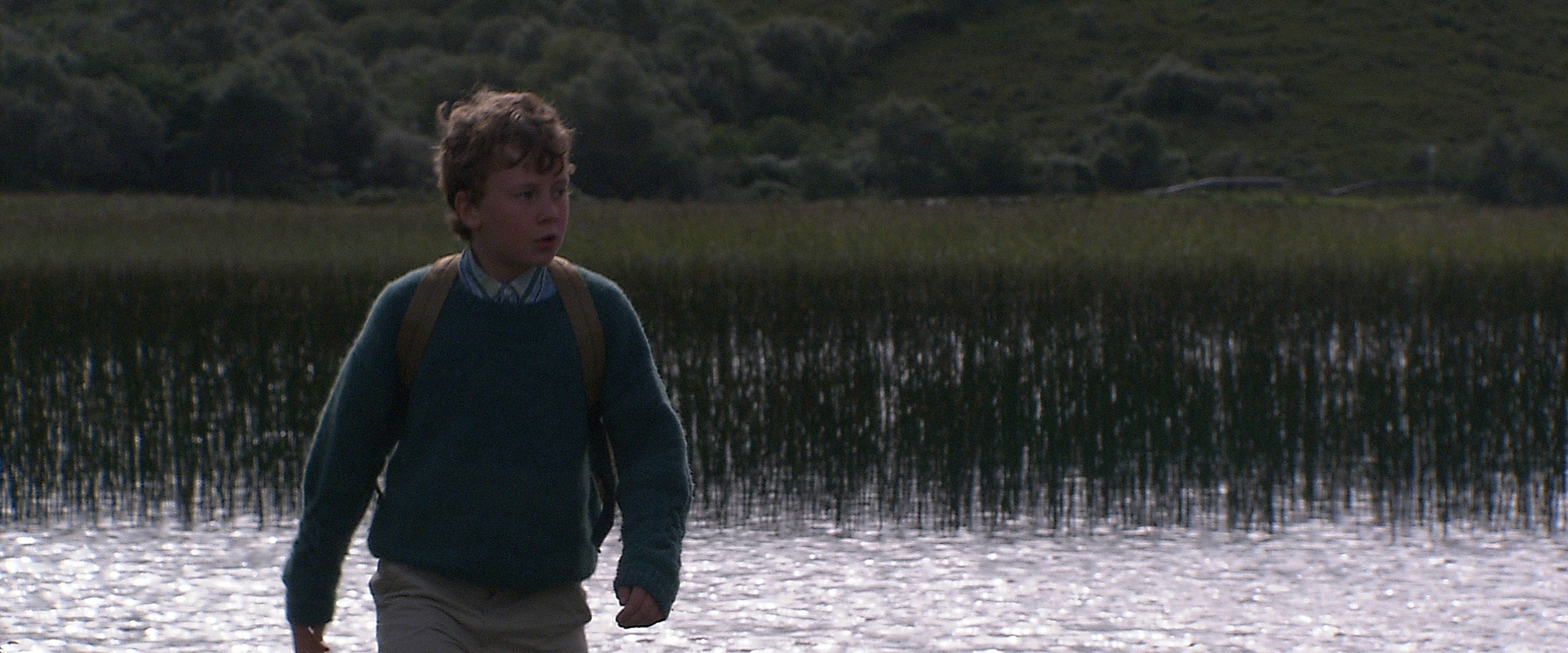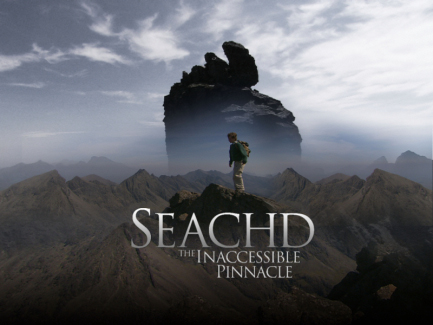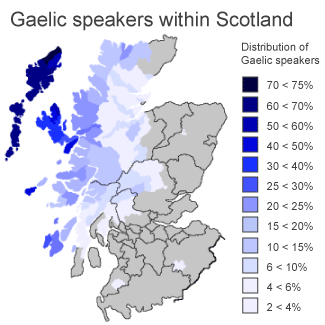Cuir fios
Contact
Fios airson nam meadhanan
Press Kit
CREW
POSTAIR
POSTERS
Dealbhan
WALLPAPERS
SUAICHNEAS
LOGOS
BÙTH
STORE
Primary and Secondary School Learning Resources
Ionnsaich mu eachdraidh nan Gàidheal
Learn about Gaelic history
-
Am Mac as Sine - Sgeulachd MhicBheatha
The Eldest Son - The Real Macbeth
Tha an sgeulachdan “Am Mac as Sine” air a steidheachadh beagan bhliadhnaichean as dèidh bàs MhicBheatha, Righ uabhasach ainmeil ann an eachdraidh na h-Alba. Bha MacBethad mac Findláich (mu 1005 gu 1057) a' riaghladh Alba bho 1040 gus an do bhàsaich e. Tha e ainmeil mar character ann an dealbh-chluich le Shakespeare ged nach eil an dealbh-chluich seo a' cumail ris na thachair da-rìribh. Ann an eachdraidh 's e deagh ainm a th' aig MacBheatha 's chan e cliù mar dhuine uabhasach. Ann an eachdraidh chithear gu bheil daoine ag ràdh gu bheil e uasal 's fiadhlaidh, mar an Duan Albannach.
The Eldest Son is set not long after the death of Macbeth, one of Scotland's most famous kings. Mac Bethad mac Findláich (c. 1005 to August 15, 1057) was King of Scots (or of Alba) from 1040 until his death. He is best known as the subject of Shakespeare's tragedy "Macbeth" and the many works it has inspired, although the play itself is of limited historical accuracy. No near contemporary source remarks on Mac Bethad as a tyrant. The Duan Albanach calls him "Mac Bethad the renowned". The Prophecy of Berchán, a verse history which purports to be a prophecy, describes him as "the generous king of Fortriu", and says: "The red, tall, golden-haired one, he will be pleasant to me among them; Scotland will be brimful west and east during the reign of the furious red one."
Ciara Ghunnach - Fuadaichean nan Gaidheal
Akira Gunn - The Highland Clearances
Tha sinn a toirt 'fuadaichean nan Gaidheal' air an àm far an deach toirt air na Gaidheil an cuid cleachdaidhean 's an cuid dachaighean fhàgail 's eilthireach a dhèanamh a dh'àite cèin. Aig an àm bha atharrachaidhean mòra a' tighinn air an dùthaich ach 's ann mar a thachair a thaobh cion chòraichean agus brùidealachd nan gnìomhan an aghaidh nan Gaidheal a dh'fhàg an suidheachadh cho buileach duilich air a' Ghàidhealtachd. Am measg na bha an sàs anns an obair uabhasach a bha seo bha Pàdraig Seller agus Seumas Loch agus 's ann orrasan a tha an caractar “Pàdraig Loch” air a steidheachadh.
The Highland Clearances (Scottish Gaelic: Fuadaich nan Gàidheal, the expulsion of the Gael) is a name given to the forced displacement of the population of the Scottish Highlands from their ancient ways of warrior clan subsistence farming, leading to mass emigration. This was part of a process of agricultural change throughout the United Kingdom, but the late timing, the lack of legal protection for year-by-year tenants under Scottish law, the abruptness of the change from the clan system and the brutality of many of the evictions gave the Highland Clearances particular notoriety. The two most infamous men who carried out often brutal evictions were Patrick Sellar and James Loch on whom the character "Patrick Loch" is based.
An Fheadh-mhara Spàinneach
Spaniard & The Gael - The Spanish Armada
Sheòl an fheachd-mhara Spàinneach an aghaidh Shasainn ann an 1588. Bha 130 long an sàs anns an fheachd seo 's bha iad uile air an sgapadh às dèidh dha na Sasannaich ionnsaigh a thoirt orra. Chaidh na Spàinntich a ruith suas taobh an ear Shasainn 's às an sin dh'fheuch iad ri tilleadh dhan Spàinn Le bhith siubhal mu thimcheall Alba, a-mach an Cuan Mòr, seachad air Èirinn. Ach thàinig fior dhroch thìde a chur às dha 24 long 's iadsan a fhuair às lem beatha a' sireadh sàbhailteachd ann an Alba. Cha d' fhuair ach an dàrna leth den fheachd air ais dhachaigh. Chaidh an caiptean Francisco de Cuellar a chaitheamh gu tìr ann an Èirinn 's faodar an turas iongantach a ghabh e tro Èirinn 's Alba airson faighinn dhachaigh a leughadh on litir iongantach a chì sibh anns a' bheurla an seo.
The Spanish Armada was the Spanish fleet that sailed against England in 1588. The 130 ship Armada was scattered when attacked by the English with fire-ships and when blown north up the east coast of England, the remaining ships attempted a return to Spain by sailing around Scotland and out into the Atlantic, past Ireland. Severe weather wrecked 24 vessels on the north and western coasts of Ireland, with the survivors having to seek refuge in Scotland. In all less than half the ships made it home. Francisco de Cuellar was a Spanish sea captain who was wrecked on the coast of Ireland. The story of his incredible journey home through Ireland and Scotland is preserved in a remarkable letter. You can read the full text in English here.
Sìleas - An t-Each Uisge
Sìleas - The Kelpie
Tha na t-each uisge a' nochdadh ann am beul-aithris nan Ceilteach mar each aig a bheil cumhachdan os-nàdarra a gheibhear ann an lochan 's abhainnean Alba 's Èirinn. Ann an Arcaibh tha creutair gu math coltach ris an seo a' togail ceann cuideachd ach 's e Nuggle a th' aca air 's ann an Sealltainn tha e aithnichte mar Shoopiltee. 'S e an t-each uisge an creutair as cunnartaiche dhiubh ge-tà. Ged a tha e neochiontach gu leòr fhad 's a tha e air talamh fuar 's ann a tha cùisean gu math eadar dhealaichte ma gheibh e sealladh idir den uisge oir 's ann a bheir a leithid de shealladh air an duine bochd a tha air a dhruim a tharraing a-staigh gu grunn na loch. Tha e cuideachd comasach don each-uisge cumadh duine a ghabhail 's mar dhuine tha an comas aige boireannaich a thàladh thuige 's gun fhios aca cò no dè th' ann mura faic iad luibhean-uisge na fhalt.
The Kelpie is a supernatural shape-shifting water horse from Celtic folklore that is believed to haunt the rivers and lochs of Scotland and Ireland. In Orkney a similar creature was called the Nuggle, and in Shetland a similar creature was called the Shoopiltee. The "each uisge" (literally "water horse") is the most dangerous form of Kelpie. As long as the each uisge is ridden in the interior of land, he is rather harmless. But the merest glimpse or smell of water would mean the end of the rider as the each uisge would ride the unsuspecting victim straight into the water. The creature assumes human or horse shape. In human form, it woos maidens, and is sometimes recognized by the water weeds in his hair.
Gaeldom
The Gàidhealtachd (Eng: Gaeldom), usually refers to the Scottish highlands and islands, and especially the Scottish Gaelic culture of the area. This is in contrast to Irish Gaelic where an Irish speaking area is known as a Gaeltacht (itself a loanword from Scottish Gaelic). The term is also used to apply to the Gaelic-speaking areas of Nova Scotia, Canada. Increasingly, the Gàidhealtachd refers to the regions in Scotland and Nova Scotia where Scottish Gaelic is spoken as the native language by most or some part of the population.
SCOTTISH GAELIC
Scottish Gaelic (Gàidhlig) is a member of the Goidelic branch of Celtic languages. This branch includes also the Irish and Manx languages. It is distinct from the Brythonic branch, which includes Welsh, Cornish, and Breton. Scottish, Manx and Irish Gaelic are all descended from Old Irish.
.
At it's height in the late 12th Century virtually every Scot spoke Gaelic, although today there remain only 60,000 Gaelic speakers in Scotland (1.2%). The main stronghold of the language continues to be the Western Isles (Na h-Eileanan Siar), where over 60% of the population speak Gaelic and also in the isles of Skye, Raasay, Tiree, Islay and Colonsay, and the parish of Lochalsh.
Sabhal Mòr Ostaig, the Gaelic college www.smo.uhi.ac.uk
Culture
Gaeldom has given us more than boiled mince in sheep stomach (Haggis) and the Highland Games. In fact, the true sport of the Gael is Shinty (see the Shinty sticks to the left) and one of the World's finest modern restaurants, The Three Chimneys, sits in the heart of Gaeldom. The Gaelic music scene whether at The Royal National Mod or at the Celtic Connections festival continues to expand, and Gaelic writers and poets - from Sorley Maclean to our very own Aonghas Pàdraig Caimbeul, Aonghas Macneacailand Iain Finlay Macleod - are bringing Gaelic life to an increasingly global audience. Gaeldom will always be responsible for the finest whisky and tweed , but with the region set to be a key provider of renewable energy to the UK and with the digital world eliminating the idea of Gaelic remoteness, Gaeldom is morphing and modernising in ways that is transforming its purpose, voice and standing in the world.
Explore Am Baile, the Gaelic village at
History
It is not clear how long Gaelic has been spoken in what is now Scotland. However, the consolidation of the kingdom of Dál Riata around the 4th century, linking the ancient province of Ulster in the north of Ireland and western Scotland, accelerated the expansion of Gaelic, as did the success of the Gaelic-speaking church establishment.
Gaelic has a rich oral (beul aithris) and written tradition, having been the language of the bardic culture of the Highland clans for several centuries. The language suffered especially as Highlanders and their traditions were persecuted after the Battle of Culloden in 1746, but it has survived and Gaelic has now achieved a degree of official recognition with the passage of the Gaelic Language (Scotland) Act 2005.
The picture above is of the Gaelic monk, St. Columba, whose reintroduction of Christianity to Scotland in the Dark Ages laid the groundwork for the spread of the language across Scotland.
Future
There are now over 50 schools in Scotland in which Gaelic is offered as the medium of instruction, and Sabhal Mòr Ostaig, Scotland’s only Gaelic-medium college, has grown year after year in its most stunning setting on the Isle of Skye.
Perhaps Gaelic's renaissance is perhaps most vibrant in the arts. In 2006, more than 2,000 competitors (a record) gathered in Dunoon for the Royal National Mod, a festival of Gaelic language and culture, and the beauty of Gaelic music all the way from traditional Gaelic psalm singing to Gaelic punk is finding a global audience, especially online with the advent (naturally) of the Gaelic podcast. We're proud to be part of the Gaelic renaissance and we hope that Seachd will pave the way for a Gaelic cinema to bring the Gaelic story to an even wider audience.
Help save Gaelic www.savegaelic.org

















































